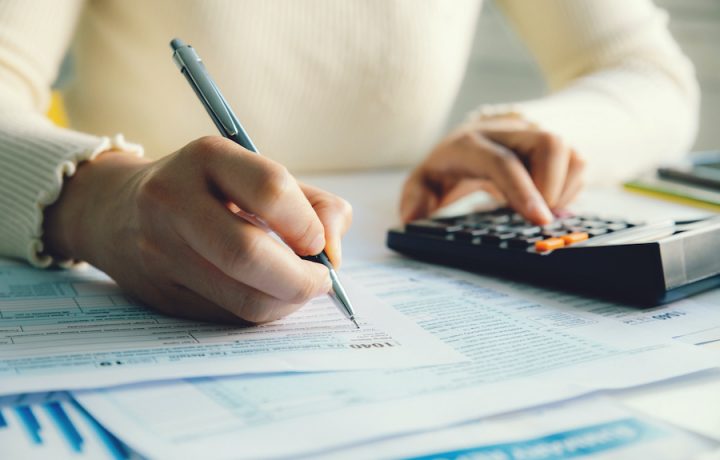Finance
Coronavirus: What you need to know before the Bounce Back Loan Scheme closes
The Bounce Back Loan Scheme (BBLS) aims to help small and medium-sized businesses access finance quickly during the coronavirus crisis. The scheme has now been extended for applications until 31 March 2021.
This article explains how the Bounce Back Loan Scheme works, who is eligible and the requirements for repaying the loan. We’ll also outline some important considerations you should keep in mind when deciding whether the scheme is right for your business.
Looking for quick answers to your questions? See our Bounce Back Loan Scheme FAQ.
What is the Bounce Back Loan Scheme?
The scheme provides financial support to small and medium-sized firms that are losing revenue as a result of the coronavirus outbreak.
Businesses can borrow between £2,000 and £50,000, but this is limited to 25 per cent of company turnover.
There are no fees or interest to pay for the first 12 months, meaning businesses can start repayments one year after taking the loan without incurring any additional costs. After the 12-month period, the interest rate is 2.5 per cent a year.
BBLS does not require personal guarantees from business owners.
The government guarantees 100 per cent of the loan and will repay the lender in case of a default. This makes it easier for banks to lend to small businesses.
Following a Government announcement in December 2020, applications for the scheme have now been extended to 31 March 2021. Businesses will be able to start an application for finance until the end of the day on this date.
To apply for the scheme, you will need to complete a short online application form. This should be assessed by the lender in a matter of days, but bear in mind that they might request additional information like a HMRC self-assessment tax return.
The British Business Bank recommends that businesses apply for the BBLS with regular business banking providers. This should help to streamline the process, because your bank will already be familiar with your business.
Some lenders only accept BBLS applications from existing customers.
Who is eligible for the Bounce Back Loan Scheme?
You’re eligible for the BBLS if your business:
- Is based in the UK
- Was established before 1 March 2020
- Has been negatively affected by coronavirus
- Was not classed as a business in difficulty on 31 December 2019
You can’t apply if you’re based in one of the following sectors:
-
- Banks, insurers and reinsurers (but not insurance brokers)
- Public sector bodies
- State-funded primary and secondary schools
Your business is also ineligible for the BBLS if you’ve already received a loan under another scheme, like the Coronavirus Business Interruption Loan Scheme (CBILS) or Coronavirus Large Business Interruption Loan Scheme (CLBILS).
The Coronavirus Business Interruption Loan Scheme
Like the BBLS, the CBILS has been extended into 2021, and now closes to applicants on 31 March. Businesses that want to apply will need to have started their applications by the end of the day.
No personal guarantees are required for loans below £250,000. Security, including personal guarantees, may still be required for facilities above £250,000 but they exclude a borrower’s main home.
If you’re weighing up which loan is better suited to your business, here are the key differences:
- The BBLS is cheaper, with interest set by the government at 2.5 per cent per year. In contrast, CBILS lenders are free to set their own interest and fees
- The BBLS has a strict limit of £50,000. The maximum loan under CBILS is £5m
If you’ve already applied for a CBILS loan that’s below £50,000, you can convert it into Bounce Back finance. This will make financial sense in most cases.
Related resources:
- Answers to key questions you may have about CBILS and BBLS
- A successful CBILS application: Give banks as much info as you can
- How I successfully applied for the Coronavirus Business Interruption Loan Scheme
Loan repayments and financial planning
The length of the Bounce Back loan is six years, but companies can pay back the loan earlier with no repayment fee.
The government recently announced its Pay As You Grow scheme, which provides the following options for businesses that may struggle with repayments:
- Extending the BBLS repayment period from six to ten years. This reduces average monthly repayments of the loan by almost 50 per cent
- Making interest-only repayments for up to six months (this can be used up to three times)
- Pausing payments entirely for up to six months (this can only be used once and only after having made six payments)
Chancellor Rishi Sunak has said that no business using Pay As You Grow will see its credit rating affected.
The tough decision to take on debt
Schemes like CBILS and BBLS provide a much-needed lifeline to businesses struggling with revenue loss during coronavirus. However, each scheme is still a loan and a form of debt. Don’t forget that you will be expected to repay 100 per cent of any loans you take.
Before committing to a loan, spend time looking at what support is available to you. The government has a dedicated business support finder that is useful for this.
It’s also a good idea to speak to an accountant or financial advisor. Accountants can provide impartial advice on your best course of action and will often have a comprehensive understanding of the loan schemes and grants available. They can also help you to build future loan repayments into your business forecast.
Many business owners will be focused on short-term survival at the moment, but it’s still important to take a step back before making a decision like this.
Taking on debt will have a long-term impact on your business and cash flow. Think about the future viability of your business and what your plan is for repayments.
Related resources:
- How to make tough business decisions
- An expert guide on the essential footsteps towards business financial recovery
- Good cash flow forecasting will show the way
How to use the Bounce Back loan
Bounce Back loans must benefit your business economically and not be used for personal purposes. However, it’s up to business owners to decide where the loan is best spent.
You can put the loan towards running costs like bills and staff wages or use it to invest in an area of your business.
Cardiff-based brewery Brew Monster combined Bounce Back finance with equity investment to upgrade its pubs and open a new bar during lockdown.
On the other hand, law firm Slater Heelis is using CBILS funding to rebuild its reserves and ensure there’s freedom to explore opportunities in future.
Slater Heelis managing partner Chris Bishop consulted other partners and made the decision to accept the loan in May.
“Taking a loan of such a substantial sum goes against our core value, which is that we’ve always been a profitable business operating on little to no debt. However, we ran realistic – albeit pessimistic – cash flow models for the next four years.
“We do want to have that money in reserve to avoid any panic decisions we might regret later and also have the freedom to explore opportunities,” he said.
There’s no doubt that some businesses will need to use loans for immediate survival. However, if it’s possible, think about how you can use loan finance to make your business more resilient.
This might include building an ecommerce option into your website or diversifying into new products.
It’s an opportunity to future-proof your business and help you to become less reliant on certain clients or sectors that may also struggle in the coming months.
You can learn more about how other businesses have tapped into coronavirus financial support on the government’s website.
Related resources:


